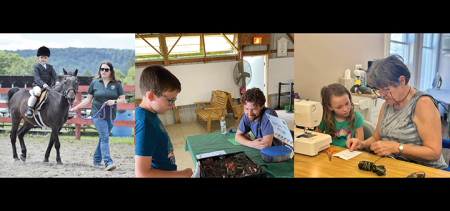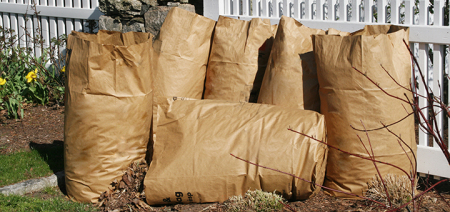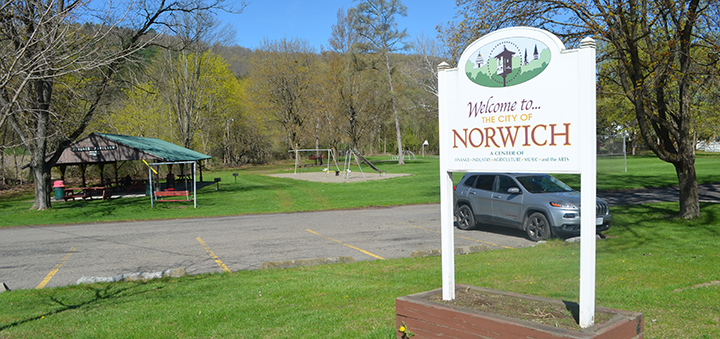Community Solar Farms Bring Concerns To Local Farmers
Published:
July 6th, 2023
By:
Kelli Miller
 Solar and Agriculture combined allow animals to graze, wildflowers to grow, and bees to buzz, while solar panels are obtaining energy from the sun. Also known as Agrivoltaics. (Photo by Solar Farms NY)
Solar and Agriculture combined allow animals to graze, wildflowers to grow, and bees to buzz, while solar panels are obtaining energy from the sun. Also known as Agrivoltaics. (Photo by Solar Farms NY)
CHENANGO COUNTY— Community solar farms are becoming a more common sight in Chenango County and across New York State.
There are proposed solar project is in the Town of Smyrna and Bainbridge.
Other projects include several built in Norwich and a newly constructed solar project at highway 206 in Coventry.
One company, altuspowerNY, formerly Solar Farms, operates in Norwich. According to the the group’s New York website, community solar is a way to share the benefits of clean solar energy without installing panels to a personal home or business. Panels located at community solar farms generate solar power that is transmitted to local power grids and in return, dollar credits reduce homeowner and renters monthly utility bills.
New York Farm Bureau Director of Communications Steve Ammerman said it is a private property decision for a farm to lease or sell their land to solar developers. The income can help support a family farm.
“However, we are in favor of policies that look to reduce the amount of prime farmland used for solar development that is important to local food production,” Ammerman added.
Chenango County Farm Bureau President Bradd Vickers said, “The loss of farmland is concerning. Without food, the rest doesn’t matter. Many older farmers with no family interested in taking over the farm see this as a way out.”
Vickers said without a good lawyer who’s knowledgeable about these particular leases, many find themselves in a losing situation. He said his attorney calls it the “flashbulb affect:” big money without knowing the long term effects.
“The farmer would be better off selling the land to the solar companies; less liability,” he added. “The Farm Bureau is not opposed to renewable energy but we are concerned with the loss of good farmland.”
A few years ago, Guilford Supervisor George Seneck said farmers in town were approached with an offer of $1,200 an acre but it didn’t go through.
“I think it’s imperative that individual towns pass their own regulations. It gives municipalities some control over what may or may not happen,” Seneck added. However, he also cited state regulations which prevent municipalities from zoning or completely banning an energy project.
Local regulations that restrict energy projects from being carried out are often overridden by the state, he said. “When you’re trying to pass a local law, you’re trying to make it as strict as possible to protect the community. But if you go above and beyond that, you can’t do it. There’s state law that says you cannot ban an energy project.”
In previous discussions, county officials said while the integration of solar farms certainly changes the face of local farming, there’s not much to be done at the local government level.
The challenge in preserving farmland may come down to a simple issue of revenue for landowners. The profits of renting land to farmers, officials said, just can’t compete with what energy companies are offering.
According to the National Renewable Energy Laboratory(NREL) at www.nrel.gov, solar panels are taking up more land and the U.S. is expected to convert over six million acres to solar facilities by the year 2050. Some researchers see this as an opportunity for pollinating as the grass or gravels at sites can be replaced with wildflowers for insect pollination.
Cornell University Entomologist Scott McArt said creating habitat where once there wasn’t before, can likely have a positive impact.
Agrivoltaics is the name for combining both regular farm and solar farm together. Livestock like sheep can be raised on farms as they easily can graze under the solar panels. Likewise, many vegetables, plants, and flowers can grow well in the shade, providing a continuation of bee pollination.
Community solar farms are one of the fastest-growing sectors of the renewable energy industry. Integrating a single solar project into the utility grid requires less investment than hundreds of rooftop power plants.
The Norwich solar farm constructed in 2019. It covers 79 acres and has tens of thousands of panels connected to the NYSEG grid. According to their site it supplies enough electricity to operate over 2,000 average-sized homes in upstate New York. The panels produce about 20 million kilowatt hours of electricity per year and will offset at least 20,000 tons of carbon dioxide each year.
To learn more, check eligibility and enroll, NYSEG customers can visit altuspowerNY or call 833-217-3911. Customers need to have a NYSEG account number, pod number and meter number available.
Author: Kelli Miller - More From This Author
Comments






